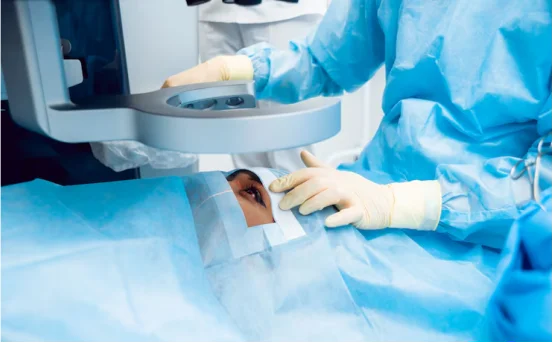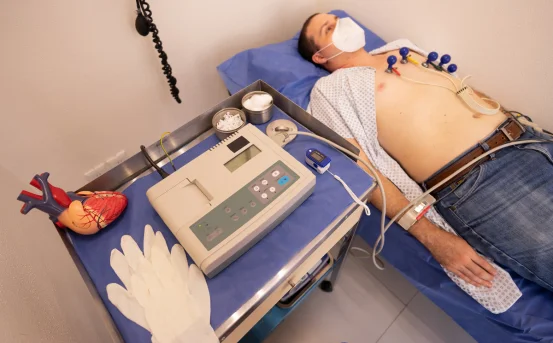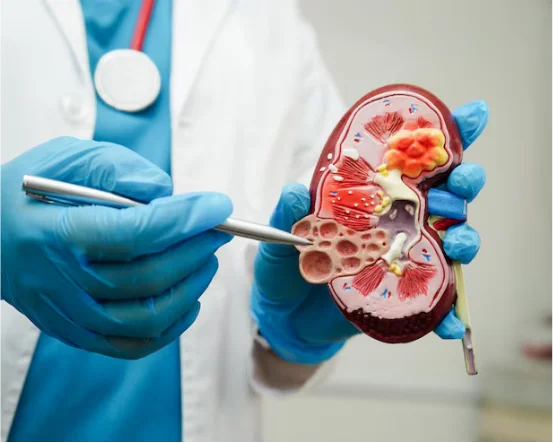Medical oncology surgery plays a pivotal role in the treatment and management of various cancers. Before a patient undergoes surgical intervention, a comprehensive and accurate diagnosis is crucial. This diagnostic phase not only confirms the presence of cancer but also determines its type, stage, and spread factors that directly influence surgical decisions.
This diagnostic phase is not just a formality it lays the foundation for effective cancer care. It helps confirm the presence of malignancy, identify the type and subtype of cancer, and assess its stage, grade, and potential spread to nearby or distant organs. These factors are critical in determining whether surgery is the appropriate course of action, what surgical method should be employed, and how it should be integrated with other treatment modalities.
What Is Medical Oncology Surgery?
Medical oncology surgery, often called surgical oncology, involves the surgical removal of cancerous tumors and tissues. Depending on the cancer type and its progression, surgery may be the primary treatment or part of a multi-modality approach that includes chemotherapy, radiation, and immunotherapy.
Medical oncology surgeons work in close collaboration with radiologists, pathologists, medical oncologists, and radiation oncologists to create a comprehensive care plan tailored to each patient’s unique cancer profile.
Importance of Accurate Diagnosis Before Cancer Surgery
A correct and early diagnosis is the cornerstone of effective cancer treatment. Here’s why diagnosis is essential before undergoing any oncology surgery:
-
Identifies the type of cancer (e.g., carcinoma, sarcoma, lymphoma)
-
Determines the stage and grade of the tumor
-
Assesses the extent of spread to lymph nodes or distant organs (metastasis)
-
Evaluates the patient’s overall health and readiness for surgery
-
Supports personalized treatment planning, including the possibility of neoadjuvant therapy (chemotherapy or radiation before surgery)
Step-by-Step Diagnostic Process for Oncology Surgery
Let’s take a deeper look at the most common diagnostic tools and procedures used in preparing for cancer surgery.
Medical History and Physical Examination
Every diagnosis begins with a detailed patient history and physical examination. Oncologists gather information about:
-
Symptoms (e.g., lumps, pain, weight loss)
-
Duration and progression of symptoms
-
Family history of cancer
-
Previous illnesses or surgeries
-
Lifestyle risk factors (smoking, alcohol, occupational exposure)
The physical exam may help identify suspicious masses or organ changes, prompting further investigation.
Imaging Tests
Radiological imaging helps visualize tumors and assess their size, shape, location, and spread. Common imaging techniques include:
-
X-rays :- Initial screening, especially for lung cancer
-
Ultrasound :- Useful for breast, abdominal, and pelvic tumors
-
CT (Computed Tomography) Scan :- Provides detailed cross-sectional images of the body
-
MRI (Magnetic Resonance Imaging) :- Ideal for soft tissue tumors and brain cancers
-
PET-CT Scan :- Detects both primary tumors and distant metastases with high accuracy
-
Mammography :- Specialized X-ray for detecting breast cancer
Imaging is often the first indication that a mass may be malignant and helps guide biopsy locations.
Biopsy: The Gold Standard for Cancer Diagnosis
A biopsy involves removing a small tissue sample from the suspicious area for microscopic examination by a pathologist. Types of biopsies include:
-
Needle Biopsy (Fine Needle Aspiration or Core Needle) :- Minimally invasive, used for accessible tumors
-
Incisional Biopsy :- Partial removal of tumor tissue for analysis
-
Excisional Biopsy :- Complete removal of a small lump or suspicious area
-
Image-Guided Biopsy :- Performed with the aid of CT or ultrasound for deep-seated tumors
-
Endoscopic Biopsy :- Taken during a procedure using a scope (e.g., colonoscopy, bronchoscopy)
A biopsy confirms the histological type of cancer, its aggressiveness (grade), and other molecular features vital for treatment planning.
Blood Tests and Tumor Markers
While not definitive alone, blood tests can support cancer diagnosis and monitor overall health before surgery:
-
Complete Blood Count (CBC) :- Detects anemia or infection
-
Liver and Kidney Function Tests :- Ensure organs can handle surgery or chemotherapy
-
Tumor Markers :- Specific proteins released by certain cancers (e.g., PSA for prostate cancer, CA-125 for ovarian cancer, CEA for colon cancer)
Tumor marker levels may guide pre-surgical assessments and are also used post-surgery for monitoring recurrence.
Genetic and Molecular Testing
Modern cancer treatment is increasingly personalized. Genetic and molecular testing of the tumor can detect:
-
Gene mutations (e.g., BRCA1/2, KRAS, EGFR)
-
Hormone receptor status (e.g., ER, PR, HER2 in breast cancer)
-
PD-L1 or MSI status for immunotherapy eligibility
These findings influence not just whether surgery is suitable but also if additional treatments like targeted therapy or immunotherapy are needed.
Staging Investigations
Cancer staging is essential before surgery to assess how far cancer has spread. It follows the TNM system:
-
T (Tumor) :- Size and local invasion
-
N (Node) :- Lymph node involvement
-
M (Metastasis) :- Distant spread to other organs
Staging involves a combination of imaging, biopsy, and sometimes diagnostic laparoscopy or bone scans. Surgical decisions depend heavily on staging results.
Pre-Surgical Evaluations
Apart from cancer-specific diagnostics, general pre-operative assessments include:
-
ECG and echocardiogram to assess heart function
-
Pulmonary function tests, especially for lung surgeries
-
Nutritional status check to ensure healing capacity
-
Anesthesia evaluation for surgical safety
These evaluations ensure that the patient is fit for surgery and helps reduce post-operative complications.
When Is Surgery the Right Option?
Surgery is most beneficial in the following scenarios:
-
Early-stage localized tumors (e.g., Stage I breast, colon, kidney cancers)
-
Solitary tumors without distant spread
-
Palliative surgeries to relieve symptoms like obstruction or bleeding
-
Post-neoadjuvant therapy to remove residual disease
-
Preventive surgeries in genetically high-risk individuals (e.g., prophylactic mastectomy)
Diagnosis determines not only whether surgery is possible but also the type curative, debulking, reconstructive, or palliative.
Role of the Multidisciplinary Tumor Board
Most cancer centers today use a multidisciplinary tumor board to review diagnosis and plan surgery. The team includes:
-
Medical oncologists
-
Surgical oncologists
-
Radiation oncologists
-
Radiologists
-
Pathologists
-
Genetic counselors
This team-based approach ensures that every surgical plan is based on complete diagnostic information and offers the best possible outcome for the patient.
Conclusion
A proper and thorough diagnosis is the foundation of successful medical oncology surgery. From imaging and biopsy to blood tests and staging investigations, each diagnostic tool plays a unique role in determining whether surgery is appropriate and how it should be conducted.
Early diagnosis improves the chances of curative surgery, while advanced diagnostic tools help personalize care and reduce unnecessary procedures. If you or a loved one is facing a potential cancer diagnosis, consult with a multidisciplinary oncology team and ensure all diagnostic steps are covered before opting for surgery.























